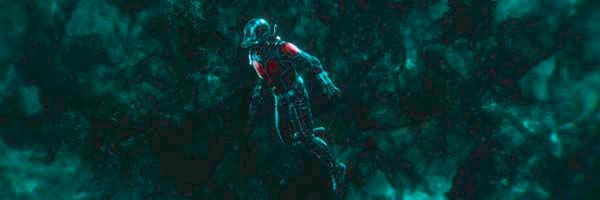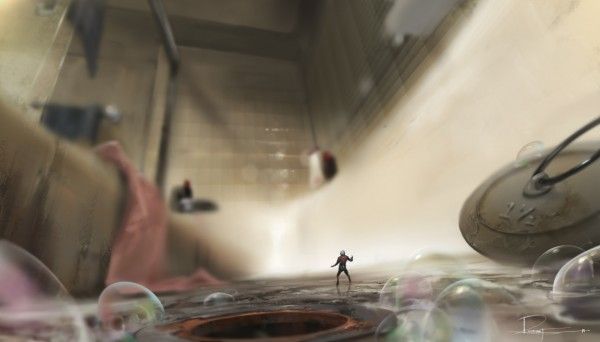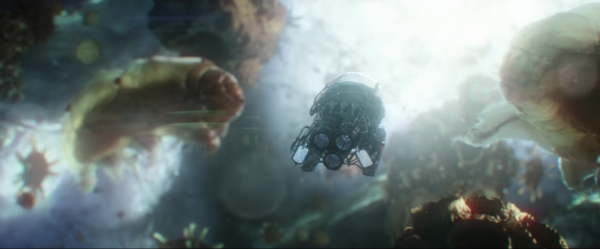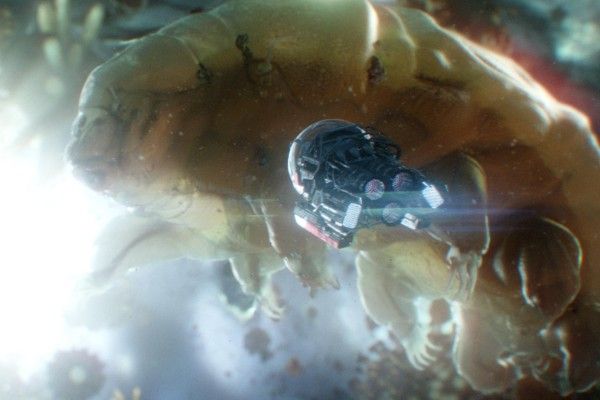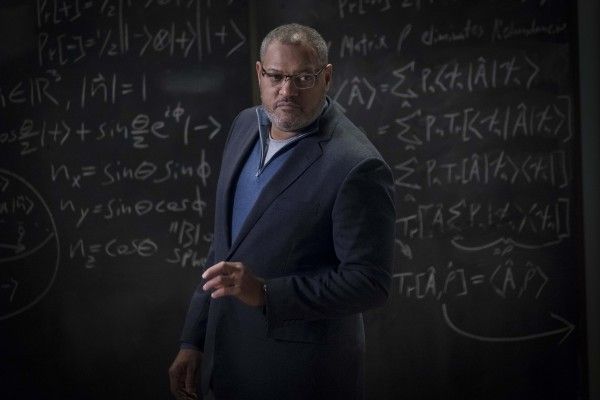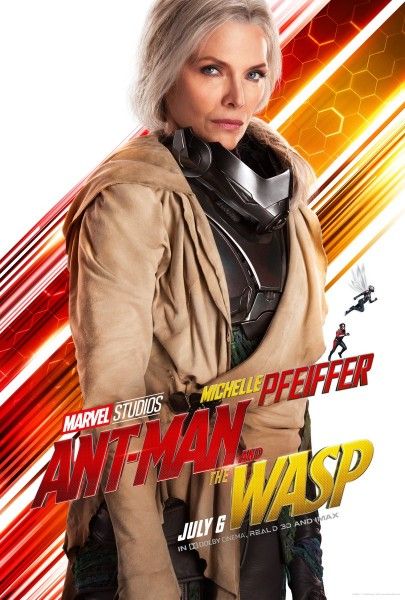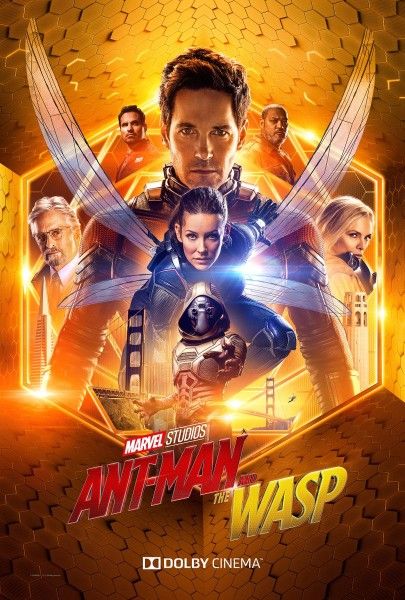Spoilers ahead for Ant-Man and the Wasp.
Marvel Studios has done a remarkable job bringing decades' worth of Marvel Comics' stories to the big screen in the MCU. They've also done solid work at encouraging their young, science-minded fans to pursue a career in science, technology, engineering, and mathematics, better known as S.T.E.M., in the real world thanks to their movie tie-in challenges. Unfortunately, there has been little cross-over in the MCU between real-world science and that of the mad science found in comic book lore. Ant-Man and the Wasp is but the latest Marvel movie to miss out on this unique opportunity.
The MCU started in earnest with the scientist to beat all scientists: Tony Stark, a.k.a. Iron Man. (He held that title until Shuri showed up, with Peter Parker making a strong play for it, as well.) Iron Man dabbled in fusion power and militarized exo-suits; The Incredible Hulk and Captain America explored the transformative power of genetic engineering and mutation; and Black Panther pushed the limits of scientific imagination by experimenting with the powerful and versatile (and fictional) material, vibranium. But it was 2015's Ant-Man that introduced size-changing science (and scientists) as seen through the lens of everyman Scott Lang who got to explore one extreme of our physical existence in an up-close-and-personal way. Unfortunately, this summer's sequel Ant-Man and the Wasp opts to do away with any scrap of real-world science in favor of slapping a "quantum" label on everything and relying on magical hand-waving instead of practical solutions. That's a missed opportunity that future Marvel movies could and should address.
Let's revisit Ant-Man. Written in part by Edgar Wright and Joe Cornish, and Adam McKay and Paul Rudd, the MCU adaptation had two basic focuses when it came to science: Hank Pym's shrinking technology and the exploration of the subatomic quantum realm. Unless the government is hiding something, we don't yet have shrinking technology; Shrinky Dinks is the best we've got. Granted, advances in technology, manufacturing, and materials sciences have allowed supercomputers and their components to get smaller and smaller (you probably have one in your pocket, purse, or hand right now), which in turn allows the things that rely on them to get smaller still, but we're still in the realm of fiction when it comes to taking a Fantastic Voyage.
The Quantum Realm, however, is a bit more interesting when it comes to the nexus of real-world quantum mechanics and Marvel's microverses. The latter is a clever storytelling device in the pages of Marvel Comics that allowed writers to explore imaginative worlds accessed through microscopic or subatomic entry points; one of these is the Quantum Realm. (We'll see how Hasbro handles that idea in their Micronauts project.) The former is a head-scratching fundamental theory in physics that seeks to explore and explain nature at its tiniest scales and energy levels, on the order of the subatomic. That's much, much smaller than even the half-a-millimeter long tardigrades that appear in both films, much to my delight.
A respectable amount of screen time is also devoted to the variety of real-world ants, which should please budding entomologists and myrmecologists out there. The creative team did a fantastic job, despite getting the ants' genders wrong. Unfortunately, that attention to detail and super-fun addition to the narrative did not carry over to the sequel.
What did carry over, however, was Ant-Man's original plot: Bad guy tries to steal the good guys' tech, so the good guys have to defend it and/or steal it back. That's about it, though the fun-size sequel does play a lot more with the size-changing effects thanks to the sequel's (presumably) bigger budget. However, the ants seen throughout the film are non-distinct and only used for comedic purposes, the "Quantum Tunnel" is more pun than practical science*, and the Quantum Realm is pure fantasy.
I'm not asking the screenwriters to suddenly earn their PhDs in physics in order to tell a comic book story, but a little attention to detail here goes a long way. Instead, the gathered writing team of Chris McKenna, Erik Sommers, Rudd, Andrew Barrer, and Gabriel Ferarri leaned on Scott Lang's outsider status to avoid going into any meaningful scientific detail; he even gets a line where he jokes, "Do you guys just put 'quantum' in front of everything?", which is pretty accurate. And while Ant-Man and the Wasp is somewhat beholden to fantastic settings that came in earlier installments--see Doctor Strange's time effects and Dormammu's realm, Thanos' domain both in space and in the Soul Gem, and Ant-Man's first visit to the Quantum Realm--the MCU's otherworldly imagination seems to be limited to colorful, lumpy shapes, fractals, and a soft, hazy look for that dreamy quality.
Executive Producer Stephen Broussard teased a more realistic version of the subatomic space during our own Perri Nemiroff's visit to the set, saying:
Does time operate differently down there? All these sort of weird questions that are on the forefront of the actual science if you dig into it, which can be very dense. It’s kind of an open book. Obviously it’s the MCU version of what’s down there, but in a lot of ways we’re almost approaching it at like, interplanetary in a weird way. You know what I mean? As if you could go down there and experience another world for instance, you know? And that if you kept going maybe you’d find other things or if you came back up it would be completely different at this level. It’s a new frontier sort of, so to speak.
How do you make it feel microscopic with the camera treatments and the relationships of the horizon and stuff like that. Figuring all that out has been a bit of a head trip, but it’s pretty cool. It can’t just feel like, I don’t know, it’s not Lawrence of Arabia, it’s not a giant desert because that triggers scale cues in your head, but you still have to kind of feel that it would be scale appropriate if you were down there, and finding that balance between the small and the epic I guess has kind of been the challenge.
Unfortunately, that creative vision wasn't executed well on-screen, at least not in a way that favored a scientific interpretation over a purely artistic one.
But the biggest oversight in Ant-Man and the Wasp was the decision to opt for hand-waving pseudoscience over actual, practical scientific explanations. That's an odd choice for a story that centers on physical technology. Doctor Strange got away with it because, after the title character exhausted every rational, medical, and holistic attempt to heal himself, he turned to the mystical arts where anything goes. Iron Man, despite Stark's apparently limitless resources, still factors in technological failures and limitations as part of the plot. Ant-Man and the Wasp breezed over those practicalities--except for some hilarious sequences with Scott's malfunctioning suit--and settled for more mystical solutions to their problems.
Let's keep in mind that the sequel features more scientists than not: Hank Pym, Hope Van Dyne, Dr. Bill Foster, and the return of the long-lost Janet Van Dyne. That's a lot of brain-power. Unfortunately, that didn't translate into a smarter script. In the comics, Ghost was an engineer who created technology that allowed him to become invisible and intangible through the use of his stealth suit. The movie opted instead to do the good old-fashioned lab explosion granting an innocent bystander phasing powers. That's all well and good, if a bit lazy, to move the story along, but it's the ultimate "cure" for these powers that proved to be the movie's greatest sin.
After decades of research under Dr. Foster and with all the resources of S.H.I.E.L.D. at his disposal, Ava/Ghost remains uncured and is rapidly approaching her final days on Earth. But rather than use the combined intelligence, experience, and technology of Pym, Foster, and the recently reunited Van Dynes, Ant-Man and the Wasp settles for literal hand-waving. Janet Van Dyne, having spent 30 years in the Quantum Realm (possibly battling tardigrades, we don't know for sure) has apparently developed healing powers, displayed in what amounts to something similar to the Force in Star Wars. Rather than put their collective noses to the grindstone (off-camera, even) to cure Ava, Janet simply puts her hands to the young woman's temples and "heals" her. Even the post-credits scene that has the team attempting to retrieve "quantum healing energy", presumably continuing Ava's treatment/therapy, feels unearned. (Who knows, maybe Reed & Co. are into healing crystals.) Worse still is the indication that, although the screenwriters included a disabled character suffering from chronic pain, they failed to understand exactly what that means for people in the real world suffering such afflictions, as Kristen Lopez pointed out in this fantastic Daily Beast write-up. So whether it's Ant-Man and the Wasp's decision to fall back on pseudoscience or its half-baked approach to real-world issues, it's an example of opportunities missed.
One concession I'll give Ant-Man and the Wasp is that, in the comics, Janet Van Dyne could produce bio-electric energy, so perhaps that's the connection the movie was going for here; that's a better decision than giving her the "ability" of being a talented fashion designer. But the greater gripe here is that Ant-Man and the Wasp had the opportunity, if not the responsibility, to put real-world science on display for millions of moviegoers around the world in a time where actual scientists and their work are under attack from powerful foes and the general public alike. They opted to go the easy route. Marvel's off-screen charity work is commendable, but their on-screen support for science is borderline abysmal.
Would you like to see more attention to detail where science is concerned in future MCU movies where appropriate? Or are you good with all the comic-book craziness? Let us know in the comments!
*Quantum tunneling is a phenomenon that occurs in everything from ordinary electronic devices like flash drives to nuclear fusion powerhouses like the sun. It's basically the ability of a particle, like an electron, to travel through a barrier, something that it could not achieve under classical mechanics.

